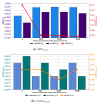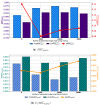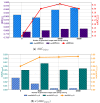On Urinary Bladder Cancer Diagnosis: Utilization of Deep Convolutional Generative Adversarial Networks for Data Augmentation
- PMID: 33652727
- PMCID: PMC7996800
- DOI: 10.3390/biology10030175
On Urinary Bladder Cancer Diagnosis: Utilization of Deep Convolutional Generative Adversarial Networks for Data Augmentation
Abstract
Urinary bladder cancer is one of the most common urinary tract cancers. Standard diagnosis procedure can be invasive and time-consuming. For these reasons, procedure called optical biopsy is introduced. This procedure allows in-vivo evaluation of bladder mucosa without the need for biopsy. Although less invasive and faster, accuracy is often lower. For this reason, machine learning (ML) algorithms are used to increase its accuracy. The issue with ML algorithms is their sensitivity to the amount of input data. In medicine, collection can be time-consuming due to a potentially low number of patients. For these reasons, data augmentation is performed, usually through a series of geometric variations of original images. While such images improve classification performance, the number of new data points and the insight they provide is limited. These issues are a motivation for the application of novel augmentation methods. Authors demonstrate the use of Deep Convolutional Generative Adversarial Networks (DCGAN) for the generation of images. Augmented datasets used for training of commonly used Convolutional Neural Network-based (CNN) architectures (AlexNet and VGG-16) show a significcan performance increase for AlexNet, where AUCmicro reaches values up to 0.99. Average and median results of networks used in grid-search increases. These results point towards the conclusion that GAN-based augmentation has decreased the networks sensitivity to hyperparemeter change.
Keywords: AlexNet; VGG16; data augmentation; deep convolutional generative adversarial networks; urinary bladder cancer.
Conflict of interest statement
The authors declare no conflict of interest.
Figures















References
LinkOut - more resources
Full Text Sources
Other Literature Sources

